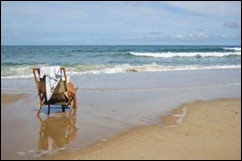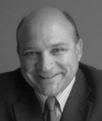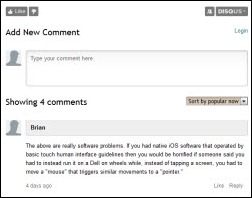Submit your article of up to 500 words in length, subject to editing for clarity and brevity (please note: I run only original articles that have not appeared on any Web site or in any publication and I can’t use anything that looks like a commercial pitch). I’ll use a phony name for you unless you tell me otherwise. Thanks for sharing!
Note: the views and opinions expressed are those of the authors personally and are not necessarily representative of their current or former employers.
ICD-10: The ED Effect
By Robert Hitchcock, MD, FACEP

As I visit current and prospective hospital clients, they openly express uneasiness about their organizations’ finances. Market forces are squeezing margins and expectations are high that Medicare and private payers will continue cutting reimbursement rates. These challenges are only intensified by ICD-10 and Meaningful Use mandates.
In the 20-plus years I’ve worked in healthcare, I’ve seen no other initiative with the potential to impact hospitals more greatly than ICD-10. With one-half of all inpatient admissions and 45% of a hospital’s overall revenue, the emergency department in particular can help define whether or not this impact will be positive or negative. As the population ages, patient volumes will continue to multiply, and the ED will need to keep up in order to keep the hospital financially afloat.
Most hospitals are anticipating – and depending upon – their departmental or enterprise EHR vendors to provide the necessary changes that will facilitate the capture of the appropriate information needed for ICD-10 coding. Unfortunately, however, some key hospital executives fail to recognize that very different approaches can be taken when implementing ICD-10 in clinical applications.
It is imperative that these executives evaluate how a solution will achieve compliance. How will content be built and maintained? How will ICD-10 codes be generated? How will the system work to maintain productivity? The method for compliance can represent success on one end of the spectrum and failure on the other end – each with tremendous financial implications.
If the vendor does not provide and maintain standardized encoded clinical content for documentation but instead offers “fully customizable content,” the client will be required to update and maintain an extensive data set with the corresponding ICD-10 terminology and/or codes. While a money-saving approach for the vendor, it will mean significant costs to the client.
If the vendor chooses to simply use an ICD-10 clinical terminology look-up function that is not integrated with other clinical content in the application, it could limit the ability of the application to re-use previously recorded information, requiring duplicate documentation. This presents another productivity burden to the clinician.
In terms of ICD-10 code generation, some software designs will offload to the physician the burden of navigating long lists of possible code-able terms to search for the most appropriate clinical diagnoses. ICD-10 represents a vast increase in the number and specificity of codes from ICD-9. As a result, physicians may fail to complete this part of the documentation or choose less definitive diagnoses when and where it saves time. This can negatively impact reimbursement as well as reporting for regulatory compliance, risk management, conformance to clinical polices, etc. Instead, having codes that are generated automatically based on providers’ documentation will not impede clinician workflow, productivity and, ultimately, documentation quality.
To obtain accurate, discrete data for analysis and reporting, physicians must embrace the user interface design of the application. Good data analysis requires a foundation of good data collection. Like CPOE, if the clinical workflow and user interface is well designed, potential benefits are quickly realized. If designed poorly, the results can be agonizing.
The increased specificity of ICD-10 will drive more than just reimbursement, magnifying the impact of the ICD-10 implementation for better or worse. Additional granularity, if accurate, can facilitate many other processes that also have financial implications to the ED and hospital, such as risk management, regulatory reporting, quality initiatives, clinical decision support, and metrics for productivity, patient throughput, ordering of tests, and resource utilization.
As well, ICD-10 has the potential to offer easier and tighter system interoperability. A standardized coding system requires that all systems speak the same language, freeing hospitals to choose the best possible technology for the ED. Indeed, having disparate but interoperable systems in the ED and inpatient environments no longer has to present the same challenges it has in the past.
My advice to those solving for ICD-10: Look beyond the basic issue of compliance and choose technology that will truly optimize the ED. It is the front door to your hospital, the start of the patient record, and the key to your organization’s prosperity. I would hate for any hospital to have to experience the frustrations and wasted expenses associated with having to rip out a system and replace it.
Robert Hitchcock MD, FACEP is vice president and chief medical informatics officer of T-System of Dallas, TX.
Standardized Data Just the Start in Making Data Usable at the Point of Care
By Jay Anders, MD

3M Health Systems recently announced it will open access to its Healthcare Data Dictionary, which translates standard terminologies and enables semantic interoperability between disparate systems. 3M made this move to meet contract conditions with the VA and Department of Defense, which are using the Data Dictionary to facilitate interoperability for their joint EHR.
The news is significant for several reasons. By making its Healthcare Data Dictionary free, providers and vendors have access to tools that translate a collection of clinical terms in a variety of standard terminologies such as RxNorm, ICD-9, ICD-10, LOINC, and SNOMED. A common language for clinical terms facilitates data standardization, analysis, and exchange.
When data is available in a standardized format, health information exchange is easier. The interoperability of clinical data is essential for Meaningful Use and the cornerstone for new reimbursement models that emphasize outcomes and accountability for patient health over traditional patient encounter volume.
The need for tools that decipher disparate but related clinical concepts will continue to grow exponentially in coming years. The healthcare industry relies on standard terminologies to move information between providers, and many stakeholders are calling for even more standards for files, codes, and other data.
The proliferation of standards aids data exchange, but the data is of limited value without means to disseminate the information and then to make it usable by clinicians. Clinical data mapping addresses part of this problem.
Payers and clinical researchers, for example, rely on clinical data to analyze financial and health trends. Data mining on a large scale is nearly impossible without technology that identifies common concepts, regardless of the terminology.
Similarly, Accountable Care Organizations and HIEs require tools to make sense of vast amounts of data from physicians, health systems, and other providers. Clinical data mapping enables the efficient identification and accurate interpretation of the information required for ACO and HIE analysis and reporting.
Given the amount of clinical data which is about to flood the industry, organizations must have methods in place to both exchange and store clinical data in standardized formats, and to make the clinical data usable at the point of care.
These are not the same.
In addition to 3M’s Health Data Dictionary, there are clinical data technologies and tools available from Clinical Architecture, Health Language, Inc., Intelligent Medical Objects, Medicomp Systems, and others. Regardless of which one of these is chosen to exchange and store clinical data, it is also necessary to organize and present clinical information to the clinician during the patient encounter.
For example, for a patient with five existing clinical conditions, the provider needs to be able to instantly see the clinical data relevant to renal failure, as opposed to their diabetes, hypertension, arthritis, or migraine headaches. Once the HIEs are up and running, there may be thousands of clinical data points for a single patient.
What is needed is an engine to organize and present clinical information at the point of care. This requires millions of links between data points to filter, analyze, and present data relevant for that specific patient encounter.
This is critical in enabling physicians to follow their own thought process and make sense of the flood of clinical data. Widespread standardization and sharing of clinical data between systems has the potential to enhance the quality of healthcare. The power and potential of clinical data is truly realized when data is delivered and made usable at the point of care.
Jay Anders, MD is chief medical information officer of MED3OOO of Pittsburgh, PA.
Healthcare Cure?
By Vince Ciotti

The idea is simple: keep people healthy. We do a great job of treating those who are already sick, but it is costing us far too much, whether through taxes, premiums, or deductibles and co-pays. How to keep people healthy? Discourage them from getting sick. How to do that? Make the cost of things that make them sick prohibitive. How do we do that? Pass the cost of curing sick people on to those products that cause specific, preventable illness.
One of the leading cancer killers today is lung cancer, pretty directly attributable to smoking. Best way to break the smoking cycle? Turn our capitalist free-market system loose by passing the cost of treating lung cancer directly on to those who smoke, until the price is so prohibitive they cease to buy tobacco. Thanks to PPS and DRGS, we know what treating most specific diseases cost. Let’s say last year the ≈300,000 people who died from lung cancer cost us taxpayers about $100,000 each to treat. That’s roughly $300B in taxes and premiums we all paid for their care. Now allocate that $300B across the tobacco companies based on their revenue. That’s a pretty stiff hit on any company’s bottom line, so they’d have to triple or quadruple the price of cigarettes to $20 or even $30 a pack to maintain a decent profit margin.
By letting the free market accurately reflect the healthcare cost of a given product, we consumers would be a lot wiser in buying unhealthy products, and their manufacturers would have to develop healthy alternatives or see their revenue gradually dry up. Farmers would have to plant other crops, and the many attorneys who file tobacco lawsuits would have to find other segments of society to represent.
Let’s shift to another easy target: obesity. Pass the cost of treating diabetes on to sugar manufacturers. Not a tax, but an invoice for what they are costing us in health care to treat diabetes. Like tobacco manufacturers, they would have to raise the price of their product to cover the resulting health care cost. Now, Wheat Checks and Al Bran would only cost a fraction of what sugar-laden cereals cost and more people would buy them, catching manufacturers’ attention. So on and on, with every disease that is directly attributable to a specific product or ingredient: mesothelioma and asbestos, cirrhosis and alcohol, heart attacks and cholesterol, melanoma and tanning booths.
It would be a bitch to set up. Many politicians, their PACS, and lobbyists would fight hard every step of the way for each disease being targeted. Maybe we should pass the cost of treating heart attacks and ulcers on to them. Jobs would be created for medical experts, economists, and statisticians. Jobs would be lost for lawyers, doctors, and marketers.
In the long run, consumers would follow their wallets to those products that cost the least, once they included healthcare costs, and avoid those products that cost the most, because of high healthcare costs. That’s the beauty of capitalism’s free-market way. This is an economic problem for which we need an economic solution.
Vince Ciotti is a principal with H.I.S. Professionals LLC.




















































































![7-3-2012 6-42-48 PM_thumb[1] 7-3-2012 6-42-48 PM_thumb[1]](http://histalk2.com/wp-content/uploads/2012/07/7-3-2012-6-42-48-PM_thumb1_thumb.jpg)












Traditionally Professional Courtesy is something that physicians gave each other - but we had to be careful with it when…